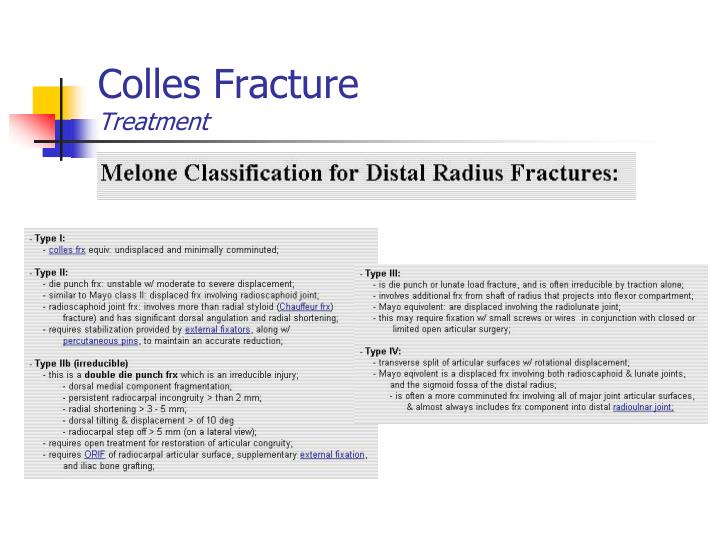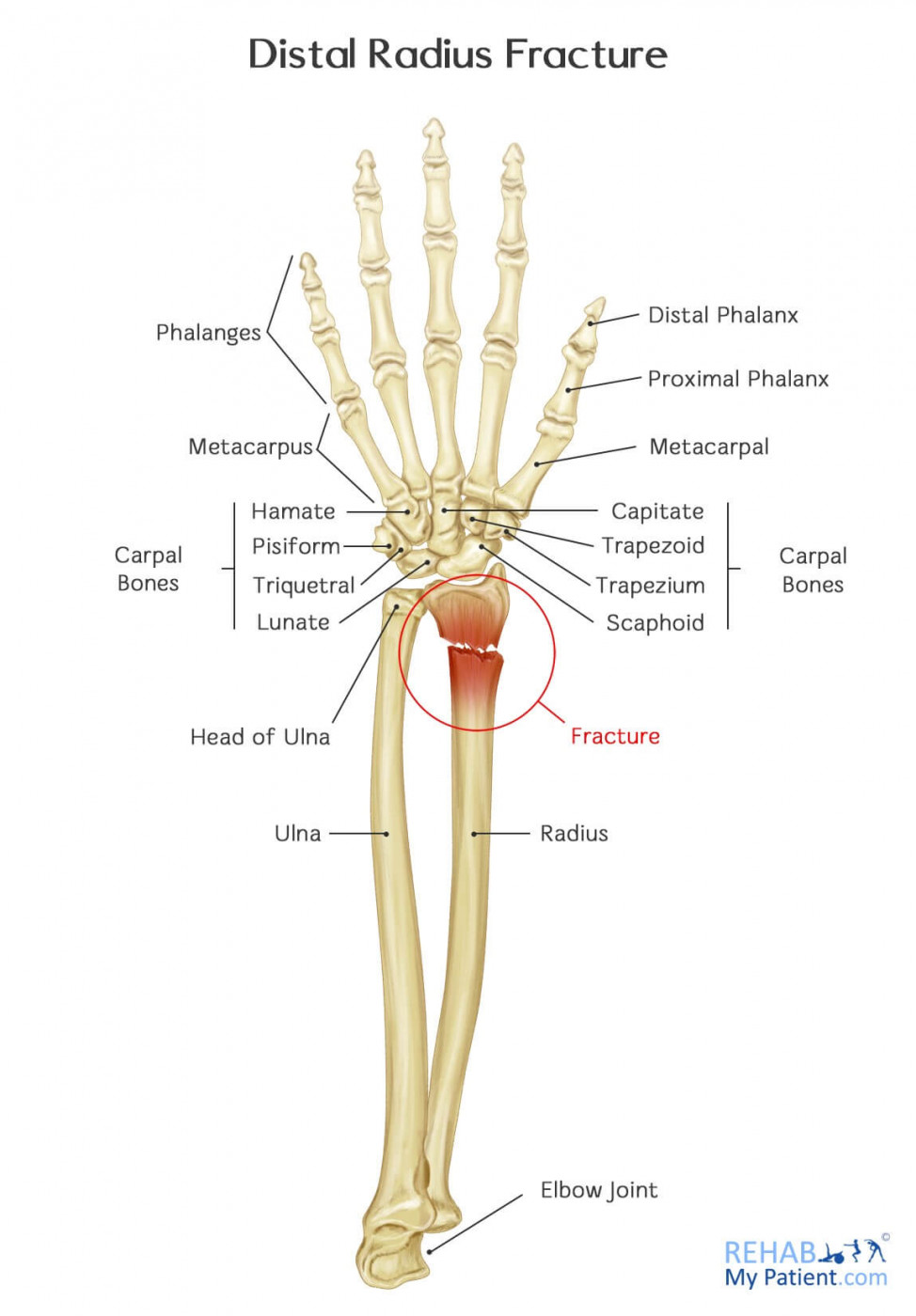


After thirteen visits, the patient demonstrated objective improvement in both range of motion and grip strength as well as subjective improvement in pain intensity. Initial therapy consisted of ice, wax bath application and gentle range of motion mobilizations for two weeks followed by entry into a supervised active rehabilitation program for a further three weeks. Dynamometer and goniometric testing revealed significant losses of strength and range of motion when compared to the unaffected wrist. These complaints were the result of a slip and fall causing a Colles’ fracture that occurred four weeks prior to presentation. A case of a 74-year-old woman complaining of pain, loss of strength and diminished range of motion in her left wrist is presented. The most common operation used to treat fractures is called open reduction and internal fixation.Colles’ fracture is a relatively uncommon presentation to a chiropractic office. If the bone fragments are displaced and the fracture is unstable, surgery may be necessary. Timely follow-up will help your child's doctor discover this early and continue appropriate treatment. Occasionally, a week or two later, the bone may have lost its alignment and need to be corrected. A cast will protect the bones and hold them in proper position while they heal. Many growth plate fractures can heal successfully when treated with immobilization: A cast is applied to the injured area and the child limits some types of activity.ĭoctors most often use cast immobilization when the broken fragments of bone are not significantly out of place. How much the broken ends of the bone are displaced.Treatment for growth plate fractures depends on several factors, including: Conversely, some areas that look like a fracture can be recognized by a pediatric specialist to be a normal development or normal growth plate appearance. This is because they occur through the part of the bone that is made up of cartilage, which is not as dense as bone.Īlso, because children’s bones have a different structure and break in different patterns than adult bones, some minor changes on X-rays indicating a growth plate fracture can easily be missed.

The clinical exam is key for diagnosing growth plate fractures because some non-displaced growth plate fractures cannot be seen on X-rays. These tests include magnetic resonance imaging (MRI) scans and computed tomography (CT) scans.Īfter discussing your child's symptoms and medical history, your child's doctor will perform a careful physical examination of the injured area. If greater detail is needed, the doctor may order other tests that can better show the soft tissues, or a cross-sectional view of the injured area. X-rays provide clear images of dense structures, such as bone. Your child's doctor will likely order an X-ray to help determine whether a growth plate fracture has occurred. It is important that the bone receives the proper treatment before it begins to heal. They are rare fractures.īecause a child's bones heal quickly, a potential growth plate injury should be examined by a doctor as quickly as possible. These fractures occur due to a crushing injury to the growth plate from a compression force. These fractures break through the bone shaft, the growth plate, and the end of the bone. This type of fracture is more common in older children. These fractures cross through a portion of the growth plate and break off a piece of the bone end. This is the most common type of growth plate fracture.
COLLES FRACTURE REHAB PROTOCOL CRACK
These fractures break through part of the bone at the growth plate and crack through the bone shaft, as well. These fractures break through the bone at the growth plate, separating the bone end from the bone shaft and completely disrupting the growth plate. Perhaps the most widely used by doctors is the Salter-Harris system, described below. Several classification systems have been developed that categorize the different types of growth plate fractures. Other growth plate fractures, such as those around the knee, are associated with a higher rate of problems and therefore require very careful observation and follow-up. In some areas of the body, such as fingers in younger children, early diagnosis and treatment before healing has set in can sometimes prevent the need for more invasive treatments. How much the bone is out of alignment (displaced).Factors that affect the risk of problems over time include: Growth plate fractures vary greatly in terms of th risk for growth problems. They are also common in the outer bone of the forearm (radius) and lower bones of the leg (tibia and fibula). Most growth plate fractures occur in the long bones of the fingers.


 0 kommentar(er)
0 kommentar(er)
